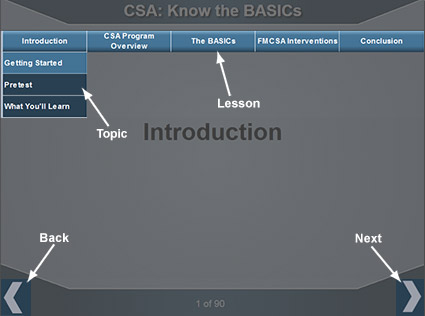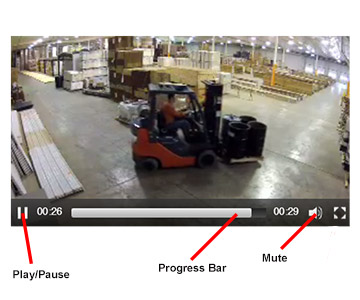The scene starts with the supervisor assigning the forklift operator a new job. But did you see where he put his foot? Right in front of the wheel. If that forklift moves only a few inches forward, it could crush his foot.
This hazard could be avoided if the operator is paying attention to his surroundings. He needs to warn his supervisor to step back so he’s out of danger. The supervisor can also do his part by placing his hand on the forklift. Then, if the forklift does move, he’ll be able to react.
Now our operator’s off to pick up his load. Did you notice his next safety violation? If you caught that he should’ve backed up that ramp, you’re right.
When you’re traveling without a load on a ramp or incline, your forks should always point downgrade. By driving forward up the ramp, he ran the risk of having his forklift tip.
He picks up his pallet and everything looks good. He adjusts the mast appropriately and raises the forks to a proper level.
However, what he does next does create a potential danger. By driving down the ramp forward – with the load below him – he runs the risk of his load falling off the front of his forks.
Even though we just said he needed to go down the incline with his forks downgrade, when they’re loaded you should drive with your load on the uphill side. So in this case our operator should’ve backed down the ramp.





